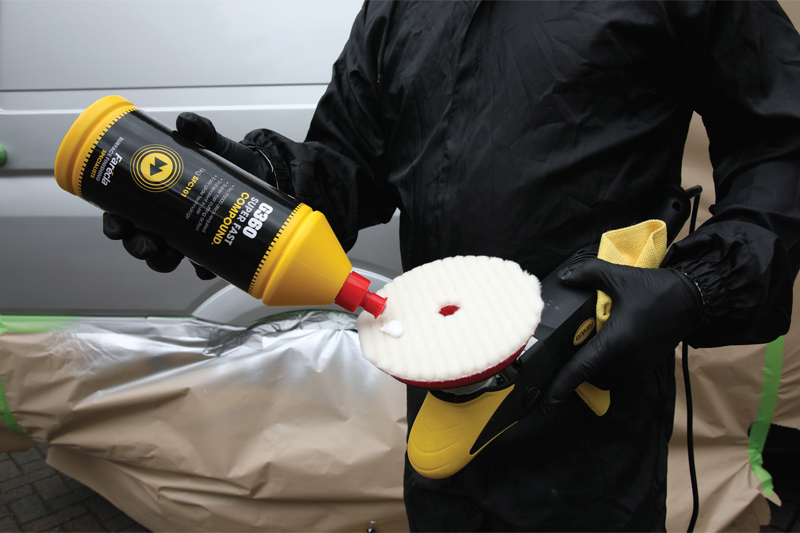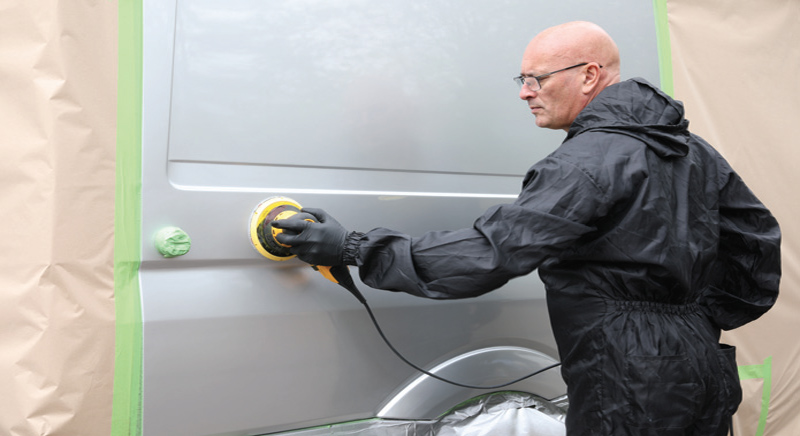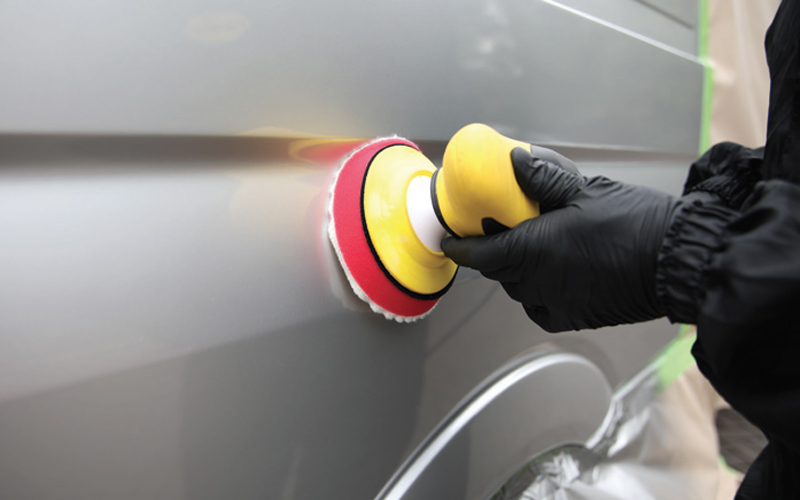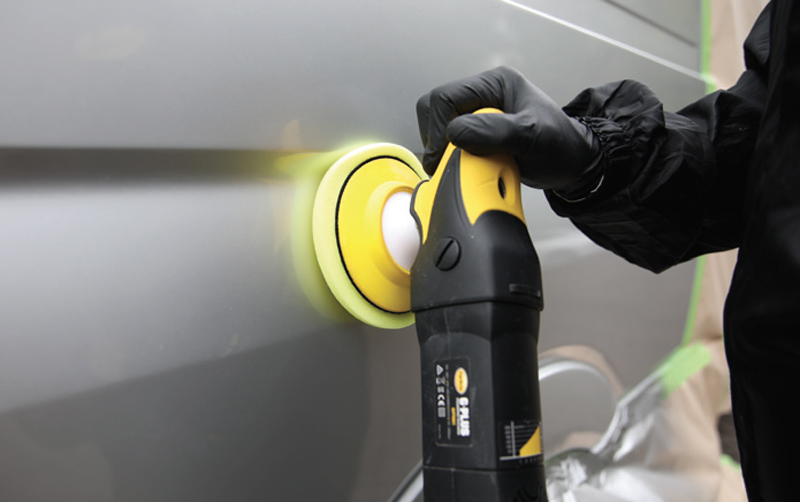
Compound manufacturer Farécla explains why its G360 Super Fast System removes the need for expensive P3000 discs, taking readers through the polishing process step by step.
360 Super Fast Compound allows operators to polish straight from P1500 wet or dry, with no loss of time, whilst also giving a permanent high gloss finish. A very bold claim, but one supported by the hugely positive feedback received from customers across the country that have experienced significant time, cost and material savings since converting to G360. The G360 Compound Starter Kit
(KT3001) contains the G360 Super Fast Compound, G Mop Super High Cut Pad and G Mop Flexible Yellow Compounding Foam. For darker colours, there is an optional Finish Kit (KT3006), containing the G360 Super Fast Finish, G Mop Flexible Black Finishing Foam and a G Plus Microfibre Finishing Cloth. Not included, but highly recommended is the G Mop Flexible Back Plate (GMB146).

Pre-compounding
As always, ensure the paint is properly cured in accordance with manufacturer instructions. Identify the defect(s) and sand to P1500 by hand or by machine. There is no need for P3000 sanding discs if you follow the Step 1 process.
If you regularly sand from P2000, then Step 1 is not required and you can go straight to Step 2.

Step 1: High cut
Using a small amount of the G360 Super Fast Compound (approx. half the quantity you would habitually use) and G Mop Super High Cut Pad, begin compounding at 1,500rpm, applying only light pressure and keeping the pad at a slight angle. If you are using the pad fresh out of the box, Farécla recommends priming it first.

It seems counterintuitive, but very light pressure is essential to Step 1 of the G360 system. Let the machine do the work – not only are you reducing exposure to potentially harmful hand arm vibration (HAV), but by keeping the pad at just a slight angle, you are also preventing the pad from ‘digging in’, which would lead to unwanted holograms.
Despite the aggressive nature of this combination, the pad runs very cool, making it excellent on fresh as well as cured paint.
By eliminating P3000, you keep the work area small. The compound develops a transparent film that allows the operator to see the scratches being removed as they work – no more guesswork about what’s happening beneath an area flatted with P3000. As you enter the last few passes, drop the pad flat onto the panel and bring the speed down to 900rpm, with no pressure at all.

Achieving the best results
Applying minimal pressure, not too much product and the correct machine speed are the keys to achieving optimum results.
Also for best results, a G Mop Flexible Back Plate offers improved handling and will minimise any risk of holograms.
Frequently maintain the Super High Cut Pad with a spurring brush to prevent any unwanted clogging in the pad. This will maintain cut and improve pad longevity.
Step 2: Medium cut
Step 1 both replaces the final sanding step and starts the polishing process. The Step 1 process may leave some small marks, but Step 2 is designed to rectify these by eliminating holograms and removing swirl marks.

Swapping the pad to the less aggressive G Mop Flexible Yellow Foam and using the same compound, begin compounding between 900-1,300rpm. The foam is thin but durable and when used with the Flexible Back Plate offers greater control over swages and contours.
After a quick wipe clean you will be left with an excellent gloss finish.
Optional step 3: Fine cut
For those working on darker colours or looking to achieve an enhanced finish there is an optional step 3 using G360 Super Fast Finish and a G Mop Flexible Black Finishing Foam.

Only a small amount of G360 Finish is needed and by compounding between 800-1,100rpm with the foam flat on the surface, you will eliminate any remaining micro swirl marks. After a quick wipe from a microfibre cloth, you will be left with a flawless deep gloss finish.








